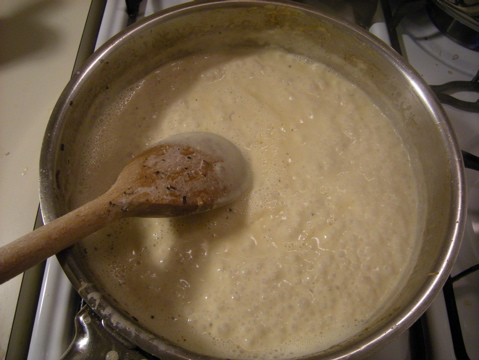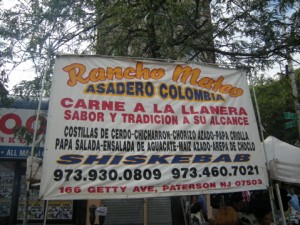Before I take off to Nesenkeag’s Annual Farm Day for a long week end, voilà a quick & easy recipe that I am very fond of: Mustard Sauce Lamb Kidneys .
The most important is to make sure you purchase very fresh kidneys. I buy them from the Aunt Halime’s Halal Meat on 3rd Avenue and Ovinton in Bay Ridge. To insure freshness kidneys have to be firm, with a rich and even color and no strong odor. It is recommended to use them the day of purchase. Lamb kidneys are single-lobed while veal kidneys are multi-lobed.
Recipe:
2 to 3 kidneys per person.
– 1 cup of diced shallots or of sweet onions.
– Melt 2 Tbsp of butter in a skillet and sauté the shallots or onions until translucent.
– While the shallots cook remove the fat around the kidneys. Cut them in the middle, remove the white tougher part in the middle, and cut into four pieces.



-Add the kidneys to the pan and sauté on high heat for 3-4 minutes. Overcooked kidneys will get tough, they should be a little pink in the middle.
-Reserve kidneys in a covered shallow dish so they can stay warm and juices can be collected.




-Flambé the pan with an Armagnac/Cognac type brandy, that will loosen up the caramelized bottom.
-Add 3 heap soup spoons of Dijon Mustard into the pan, stir well.
-Pour 1/2 pint of heavy cream into the pan and bring it to boil. When cream starts thickening add the kidneys and the rendered juices.
-Add fresh ground pepper.
Attention : before adding any salt taste your sauce. Some mustards are already salty enough, others are not, you will have to make a decision about adding salt or not.
-Bring it back to a boil, then lower the flame and watch the consistency. The sauce needs to thickens until it coats the back of a wooden spoon evenly & smoothly.
-I served it with boiled new potatoes cut in half around the rognons. it can also be served with rice of fresh tagliatelles.
-On the picture you will notice that I have added some parsley and few pink peppercorn for garnish. This step is not indispensable.
Bon appetit et bon week-end!
















